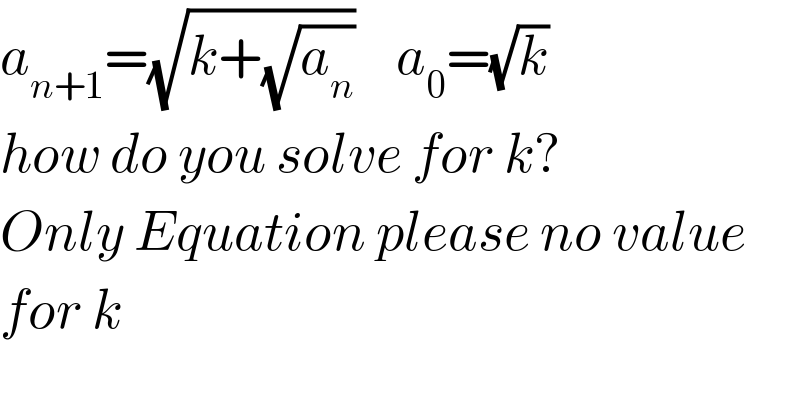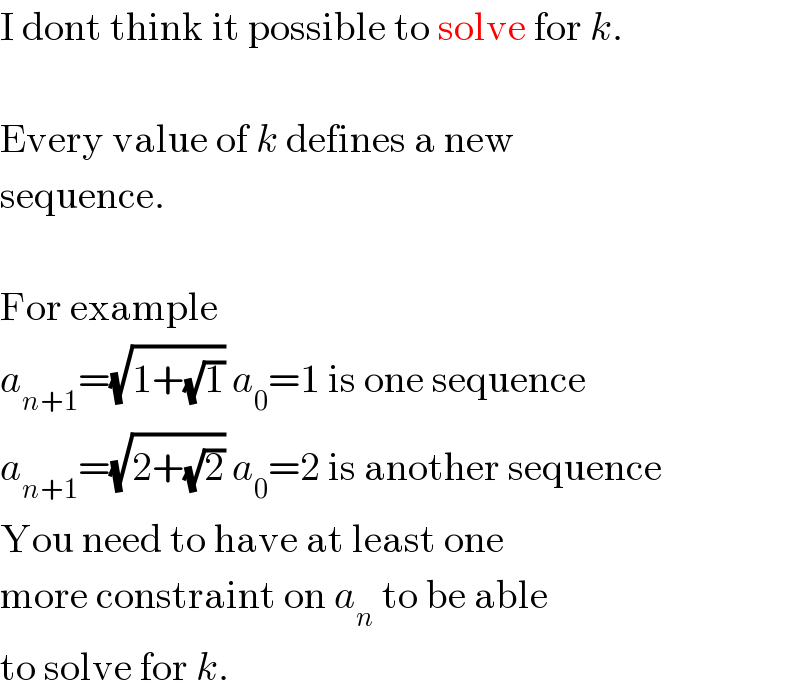
Question and Answers Forum
Previous in Relation and Functions Next in Relation and Functions
Question Number 94382 by frc2crc last updated on 18/May/20

Commented by prakash jain last updated on 18/May/20

Commented by mr W last updated on 18/May/20

Answered by mathmax by abdo last updated on 20/May/20

